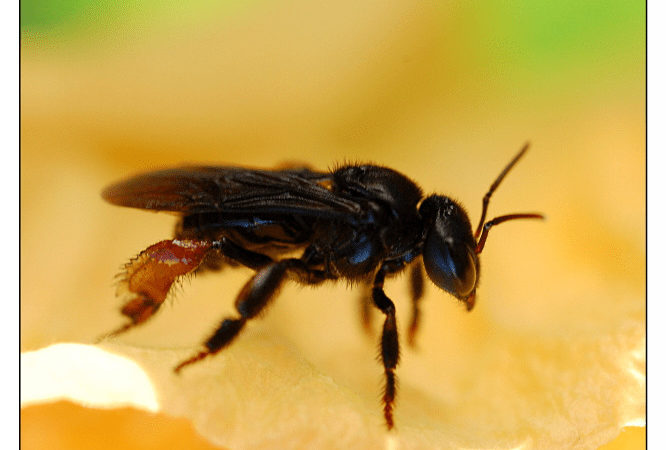The idea that each and every one of us is daily indebted to millions of tiny species such as bacteria, fungi, algae, worms and insects, though true, is a hard sell.
Before you leave the house in the morning, the air you breathe, the coffee you drink and the toast you munch are there courtesy of three tiny organisms and the communities of which they are part:
Procholorococcus should be a name as well-known as oxygen because, although a microscopic bacterium, it dominates the ocean plankton that generates over half the oxygen in the air. It is one of Earth’s most abundant organisms and plays just as important a part as forests as the ‘lungs’ of the planet.
Trigona is a small, stingless bee that pollinates coffee and about 90 other crops worth billions worldwide. It is especially important today as it steps up to replace the honeybee which is declining worldwide.
Trichoderma is the farmer’s best friend being a soil fungus that converts this year’s crop stubble into the nutrients required by next year’s crop such as the wheat in your toast. Every handful of healthy soil contains billions of valuable soil microbes vital to agricultural production.
These three organisms are at the core of natural communities of invertebrates and microbes which provide the supporting cast for things we need and use every day. Surely we should factor at least some of them into our economic plans.
But their economic value is hard to calculate: How do you value atmospheric oxygen? Perhaps the insects that pollinate crops and the fungi that fertilise farm soils could be assessed as some fraction of the billions of dollars generated by global agriculture.
The same situation applies to the food chains that generate our fisheries and the soil communities upon which forestry is based. Further, these miniscule organisms help regulate global carbon and provide the inspiration or blueprints for an astonishing range of industrial products from cold-wash enzymes to super-sensitive fire alarms.
But these names are generally unknown to the industries that depend on them – or their investors for that matter. Apparently entire sectors of the economy rely on components (= species) about which almost nobody in the business has a clue.
We simply hope they are out there and functioning. But are they? Will they?
We don’t know!
What we do know is that these millions of invertebrate and microbial species remain a scientific and policy Cinderella. This is because conservationists, whether government, non-government and, regrettably many scientists, are almost completely preoccupied by popular charismatic species that make up at most a mere 5% of species on Earth.
Agriculture, fisheries and forestry depend on millions of tiny species that pollinate and fertilise. And this dependence must then also extend to the complex of associated industries such as farm finance, the manufacturers of farm machinery, sawmills, food and fish processing plants, transportation, wholesale and retail.
In this context, biological diversity (or biodiversity) which is, to most people, solely the concern of conservationists, is in fact at the core of the economy and affects every one of us every day.
It’s a hard sell, but at least some of these names should be as familiar to us as the makes of cars and brands of liquor. The conservation of microbes and invertebrates is already the concern of big business; it just does not know it yet.
MAHB-UTS Blogs are a joint venture between the University of Technology Sydney and the Millennium Alliance for Humanity and the Biosphere. Questions should be directed to joan@mahbonline.org.
MAHB Blog: https://mahb.stanford.edu/blog/the-bugs-in-our-lives/
The views and opinions expressed through the MAHB Website are those of the contributing authors and do not necessarily reflect an official position of the MAHB. The MAHB aims to share a range of perspectives and welcomes the discussions that they prompt.
